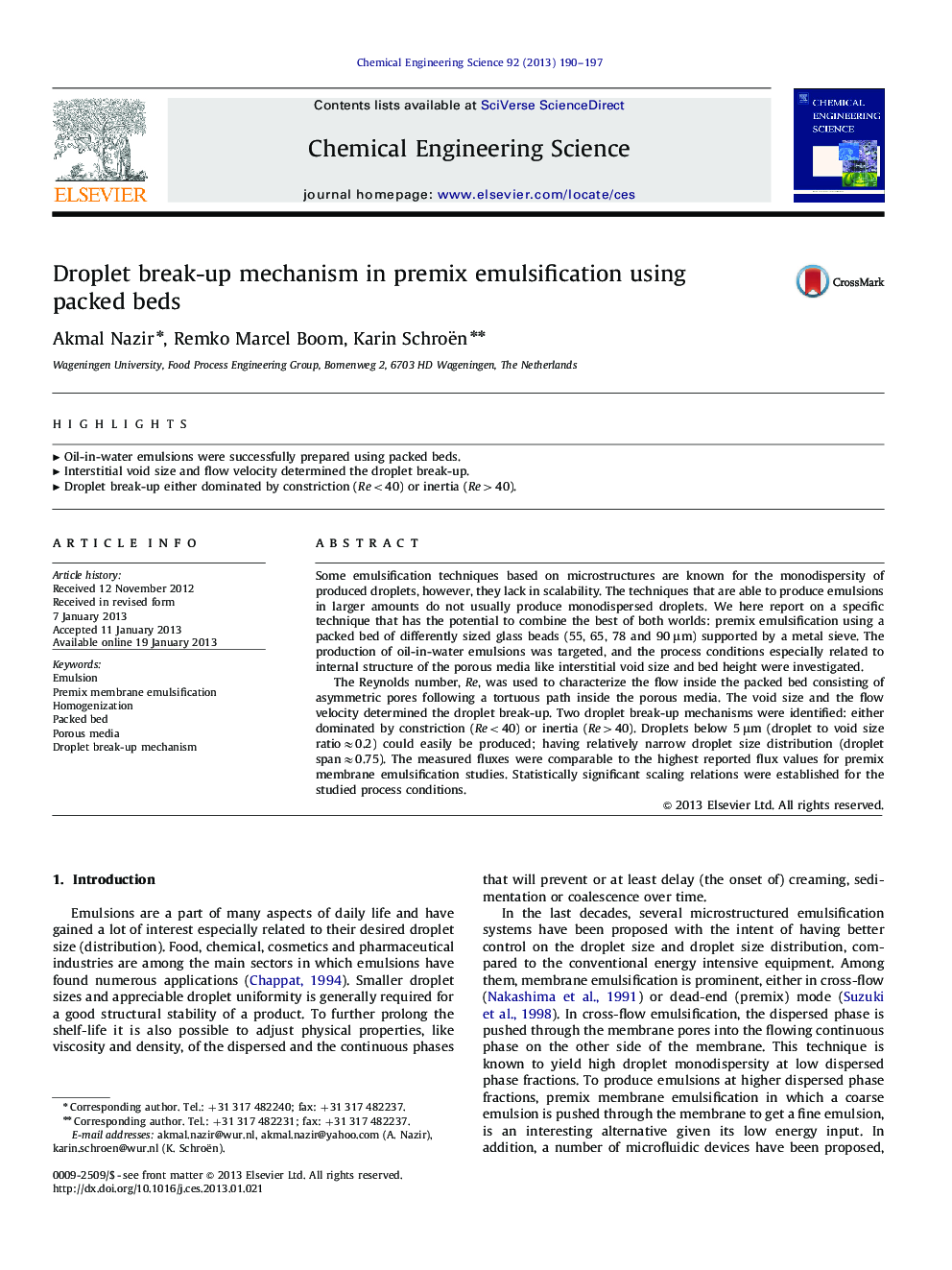| Article ID | Journal | Published Year | Pages | File Type |
|---|---|---|---|---|
| 155314 | Chemical Engineering Science | 2013 | 8 Pages |
Some emulsification techniques based on microstructures are known for the monodispersity of produced droplets, however, they lack in scalability. The techniques that are able to produce emulsions in larger amounts do not usually produce monodispersed droplets. We here report on a specific technique that has the potential to combine the best of both worlds: premix emulsification using a packed bed of differently sized glass beads (55, 65, 78 and 90 μm) supported by a metal sieve. The production of oil-in-water emulsions was targeted, and the process conditions especially related to internal structure of the porous media like interstitial void size and bed height were investigated.The Reynolds number, Re, was used to characterize the flow inside the packed bed consisting of asymmetric pores following a tortuous path inside the porous media. The void size and the flow velocity determined the droplet break-up. Two droplet break-up mechanisms were identified: either dominated by constriction (Re<40) or inertia (Re>40). Droplets below 5 μm (droplet to void size ratio≈0.2) could easily be produced; having relatively narrow droplet size distribution (droplet span≈0.75). The measured fluxes were comparable to the highest reported flux values for premix membrane emulsification studies. Statistically significant scaling relations were established for the studied process conditions.
► Oil-in-water emulsions were successfully prepared using packed beds. ► Interstitial void size and flow velocity determined the droplet break-up. ► Droplet break-up either dominated by constriction (Re<40) or inertia (Re>40).
